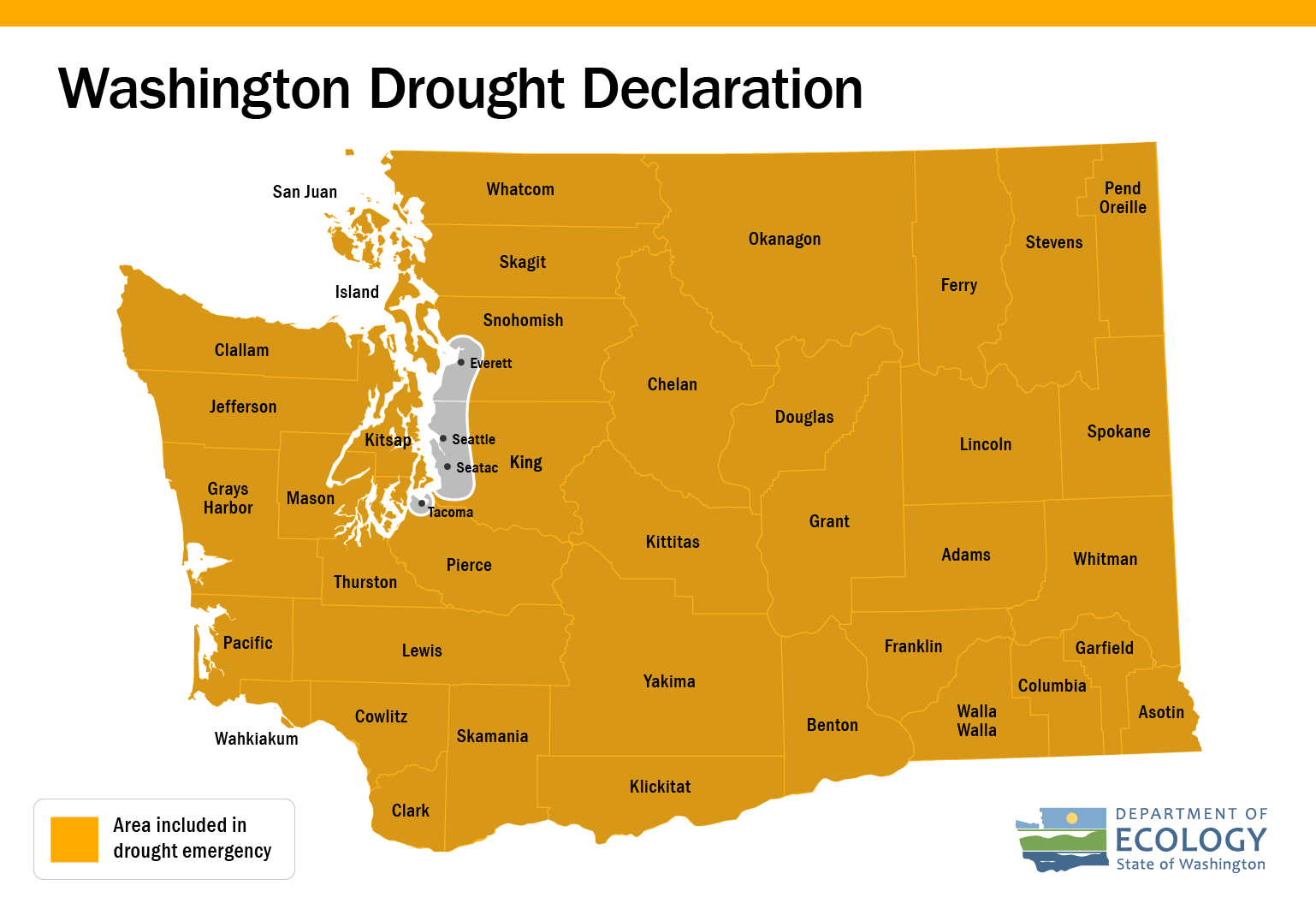
The drought declared April 16 is still in effect. While there was hope for some relief in the fall, it’s looking like the anticipated La Niña conditions will be later and weaker than initially hoped according to experts who met July 24 for Ecology’s monthly Water Supply Availability Committee (WSAC) meeting.
The WSAC meeting features analysis from state and federal from agencies throughout Washington including the Office of the State Climatologist, the U.S. Geological Survey and the National Oceanic and Atmospheric Administration.
Still warm and dry
Averaged statewide, the water year so far (October through June) was the 15th warmest and 50th driest on record. While statewide precipitation averaged near normal, precipitation maps showed a sharp contrast between the rainy western side of the state and the more arid eastern side. Drier than normal conditions have been constant east of the Cascade Mountains for the last 90 days.
July was hot in many parts of the state. As of July 24, Seattle set a record for the longest run of consecutive days over 80 degrees (17) while Spokane broke a record for the number of consecutive days (18) above 90 degrees.
In Yakima, according to the Bureau of Reclamation, reservoir storage is the 5th lowest it’s been since 1971. Irrigators in the area can expect about 50% of their normal water supply. Even with the pro-rationing, officials expect to have very low reservoir storage by the end of the irrigation season.
Streamflow and runoff forecasts, according to the National Weather Service are anticipated to remain lower than normal. Water supply forecasts are near record lows for much of the state.
What’s next?
Near normal conditions are expected for the rest of summer. That coupled with the end of El Niño and an anticipated La Niña weather pattern had brought some hope for a wet fall and summer. But according to the Office of the State Climatologist, La Niña is now expected to be later and weaker than initially anticipated. There’s a one in five chance there will be no La Niña at all.
You can keep up with the latest drought and water supply information by checking our Statewide Conditions page.

